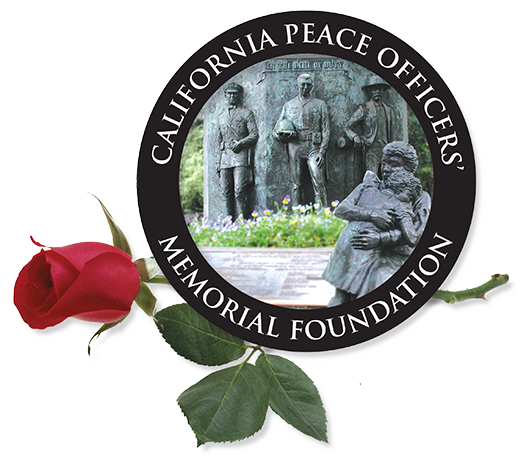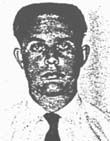On July 22, 1957, Officer Milton G. Curtis, a 25-year-old with two months of service, and Officer Richard A. Phillips, 28, with two years of service, had stopped a man for running a red light. While writing the ticket, unaware that the driver had just kidnapped and raped the owner of the car prior to stealing it, both officers were shot to death by the driver with a .22 caliber revolver.
He was 24 when he shot and killed two police officers and 45 years later, facing prison at last, Gerald F. Mason tearfully told his victims’ families, “I don’t understand why I did this.”
Under a plea deal, rape, robbery and kidnapping charges were dropped against the 69-year-old retired service station owner, who apologized in court as he stood before the families and about a dozen members of the El Segundo police department.
He was immediately sentenced to two consecutive life terms.
“I feel like I am dreaming,” Mason said. “It makes no sense. It’s contrary to everything I believe. At no other time in my life have I intentionally harmed anyone. I don’t know why I did this. “I detest this crimes . . . I still do not want to remember what happened.” “Please forgive me,” he said. “Do not be bitter.”
The Columbia, S.C., man had been living quietly with his wife of 40 years, giving her and their neighbors no indication that he had a criminal past. He was arrested in January 2003.
No member of Mason’s family attended the hearing, and his lawyer in Columbia, Chris Mills, said they would not comment.
“From our perspective, he’s acknowledged his responsibility. He’s apologized in court,” Mills told The State newspaper in Columbia. “Now it’s time for everybody to move on with their lives.”
Neighbors were shocked.
“We want to think he wasn’t guilty because of the way he carried himself,” Bill Wilson told the newspaper. Added longtime friend Jimmy Woods: “This is just flabbergasting.”
Deputy District Attorney Darren Levine said his office would not oppose a request by Mason to serve his sentence in South Carolina near his wife and family.
El Segundo officers Milton Curtis, 25, and Richard Philips, 28, were shot three times each on July 22, 1957, shortly before 1:30 a.m. after they pulled Mason over for running a red light.
In his dying act, Phillips marked his killer for life, said Deputy District Attorney Darren Levine. One of the three bullets the officer fired into the getaway car struck Mason, he said. When detectives arrested him, they discovered a tell-tale scar on his back.
About 90 minutes before the shooting, Mason robbed two 15-year-old girls and their dates, California authorities said. One of the girls was sexually assaulted.
The case languished until police got a tip last September that someone had bragged about the killings.
The lead was false, but it prompted a review in which the FBI’s fingerprint database matched prints from the stolen car to Mason, who had spent time in jail for a 1956 burglary conviction in South Carolina.
In court the children of the slain men spoke of the grief their families endured without their fathers.
“Your cowardly act shattered our lives,” said Carolyn Phillips, who spoke of her mother’s struggle to raise three children. “We cannot and will not forgive you.”
Outside court, Keith Curtis, the son of the other slain officer, said he was not moved by Mason’s courtroom apology.
“There is no way to describe our pain,” Phillips said. “There is no way to describe the emptiness and anguish we have felt all our lives without Dad . . . We cannot and will not forgive you.”
“Mr. Mason is sorry now and we heard his apology speech,” he said. “He was sorry for 55 years and the only reason we’re hearing that apology now is because he got caught.”
“While advances in technology were key, Los Angeles County Sheriff Lee Baca also credited generations of investigators who ultimately brought Mason to justice.
“I thought this day would never come,” said Sheriff’s Deputy Howard Speaks, now 88, who had dusted the 1949 Ford for prints.
Sheriff’s forensic experts reviewing the case last September combined two partial prints of the same finger from the Ford’s steering wheel and submitted the result to the FBI. The match was from a 1956 burglary conviction.
Sheriff’s detectives, Dan McElderry and Kevin Lowe, said that match allowed them to make the connection with evidence gathered shortly after the crime. The evidence was presented to Mason’s lawyer before he entered the plea.
In 1960, a Manhattan Beach resident called police to report the discovery of a watch and a chrome-plated revolver behind a house. The police then found a second watch, and both watches were identified as belonging to the Hawthorne victims.
The rare, nine-shot Harrington & Richardson .22 revolver was identified as the murder weapon. It had been purchased four days before the killings in a Shreveport, La., Sears store, where the buyer gave the name G.D. Wilson and a fictional Miami address. A day earlier at a YMCA across the street, the guest registry had been signed by a George D. Wilson, also of Miami.
Prosecutors said they had expert evidence that the handwriting on the registry name was the same as on Mason’s 1999 South Carolina driver’s license application and on an automobile bill of sale.
When detectives served a search warrant on Mason’s Columbia home after his arrest in January, they found in his gun collection another rare nine-shot .22 revolver. In addition, investigators found three witnesses who identified Mason from a 1956 photo as the man they had seen the night of the murders.

